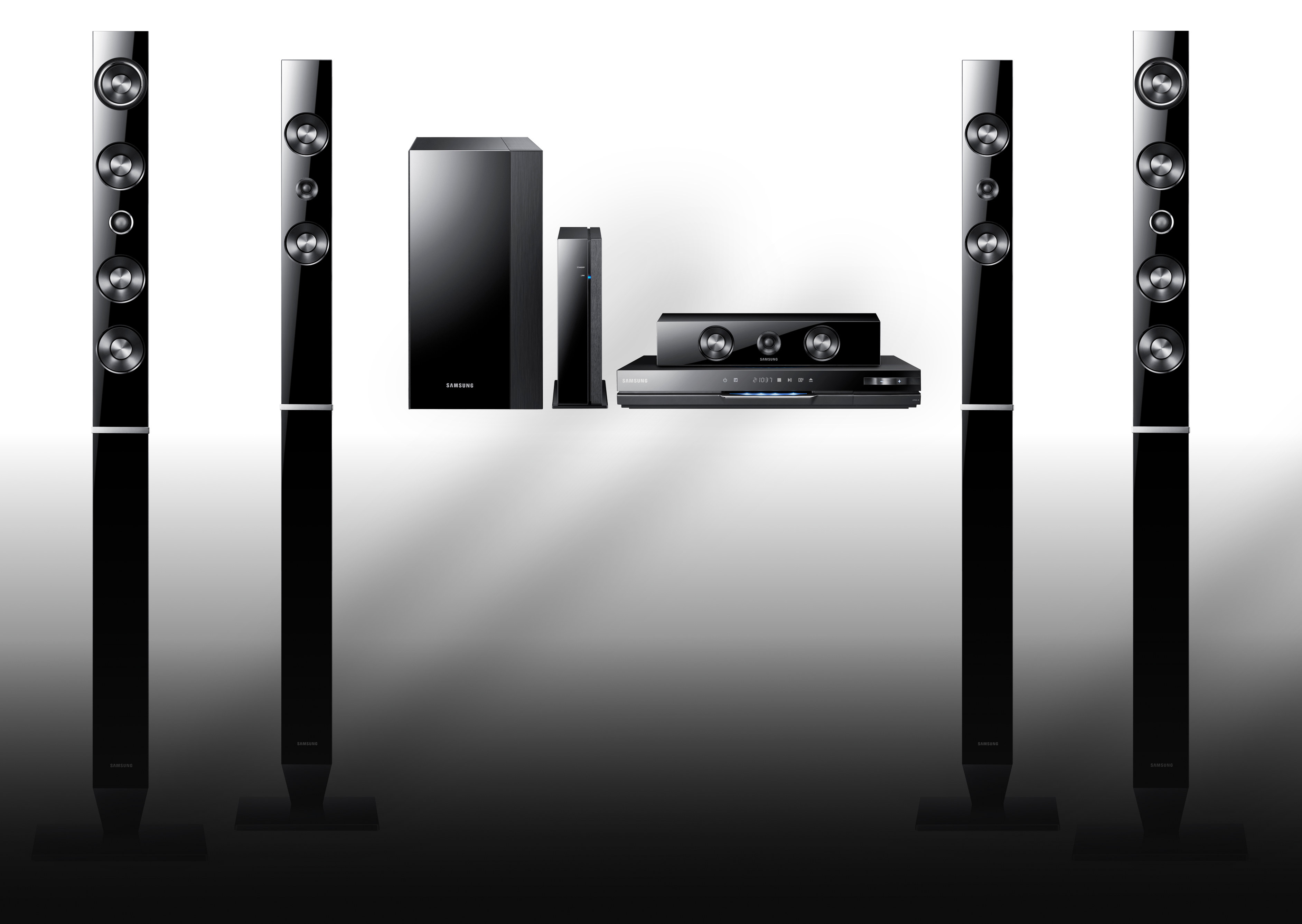It’s a svelte 6cm high, and 43cmx33cm wide and deep, so it can slide into a pretty small shelf. It has no air vents on top, so you don’t need to worry about leaving a big gap, although the funky faux spinning-CD design on the top would be a shame to hide. The only cooling, in fact, is a small port at the back with a fan — thanks to the marvels of switched mode power supply and the Class-D amplifier, which are not only super-compact, but also super-efficient in creating entertainment, not heat.
No ad to show here.
Packed. Just packed.
Assembly is straightforward, didn’t even bother with the manual. Open the enormous box it comes in, and behold what looks like a Do It Yourself doomsday device kit. Rows of long, glossy, piano black plastic rods, each in a protective jacket of padding, lovingly nestled in polystyrene racks. Pull them out, lay them on the carpet like you’re a Matrix-age Jason Bourne, and slide them into each other’s perfectly cast sockets. Couple of screws to hold it all together, and you have four tallboy speakers, each 1.3m tall and 9cm wide. As I said, tall and skinny. Extract AV player, “wireless” rear amp unit, woofer and centre speaker.
The equally skinny wires (hmm…) all come with colour-coded plugs that snap into appropriately coloured sockets in the back of the head unit. The rear surround speakers plug into a compact (although not tiny) box that acts as a wireless receiver and amplifier. The rear speakers are not ‘wireless’ as such, the box needs its own plug-point to power it — but at least you don’t need to have wires criss-crossing your lounge. Unless, of course, you don’t have a power point at the back of your room.
Hook up an HDMI (or component/composite) cable to your TV, and you’re off.
Click here for more
The processing power inside this box is pretty phenomenal, with standard definition to HD up-sampling, 3D content playing, and 2D-3D conversion (bit of a gimmick, but let’s go with it). It’ll decode a multitude of audio and video formats (although not FLAC), and handle DTS and Dolby surround.
For movie lovers it’s a great buy — quick and easy to set up, very satisfactory picture quality and loads of media support. Surround sound is clear, coherent and you can crank it pretty loud.
For the occasional music listener it’s also a very decent option — the tallboys, even with their tiny drivers, make a good fist of music reproduction, with the external sub filling in the lows. Crisp, clean, full-sounding.
If you’re a music lover, on the other hand, you’ll be impressed for the first ten minutes, then start to get that sinking feeling created by the collision of cooked numbers and inadequate hardware.
Bass onomatopoeia
For movies, the sub does a perfect job of rumbles and thuds and roars. For music it’s just horrible. It can make two sounds: “wummm” and “whooom”. To call it one-note would be generous. It uses a smallish 6.5” woofer with a massive passive radiator to extract every ounce of sound energy to make wummm with.
The left and right speakers work well, and create a pinpoint-accuracy focus. Good for movies if you have rear surrounds for space, terrible for stereo. I found myself keeping checking to see if I’d accidentally set it to use the centre channel — the sound stage was about an inch wide, perfectly centred. Not a system where you can lose yourself in the music.
Samsung goes on about the hi-tech 3D sound, which certainly adds immersion, but in a fragile, synthetic way. It’s a symptom of modern consumer electronics design: with powerful DSP you can do very clever things that let you fill out the spec sheet and product brochure, but that’s because you stick in a couple of big ICs with clever software, and boom, you’re done. A cheap way to add bells and whistles, but it’s ephemeral — the only real way to turn signal into sound energy is with plenty of electrical power, and meaty transducers. Eletrickery can only pretend.
Samsung talks about this unit having a total power rating of 1300W. How, pray tell, does this happen when the unit consumes 70W in operation? Realistically it probably produces about 20 real watts.
The Class-D amp is efficient, but these “digital” amplifiers are notoriously tricky to get good quality sound from, and a certain gritty harshness becomes very apparent at higher volumes.
But the buyer of this kind of system is uninterested in such niceties. So, who’s it for?
You’ll love it if you have a smallish room and don’t want to muck around with complication. You will love it if you have limited space, and limited inclination to be plugging stuff into other stuff. You will love it if you love movies, like the noise music makes, but not too fussed about the music itself.
Who it’s for:
- Someone living in a flat or small house wanting an all-in-one home entertainment system
What we liked:
- Flexible, powerful, versatile
- Quick and easy setup
- Super space-efficient
What we didn’t like:
- The woofer. You could possibly improve it by cracking it open and filling up the radiator with resin or cement to reduce the droning resonance.
- Audio output options limited to stereo RCA only — you can’t really use this as a source to feed other components other than thorugh HDMI, so there is little ‘upgrade path’. It’s really only a monolithic source/amp combo for TV and movie watching. Which is a plus if that’s what you want.
